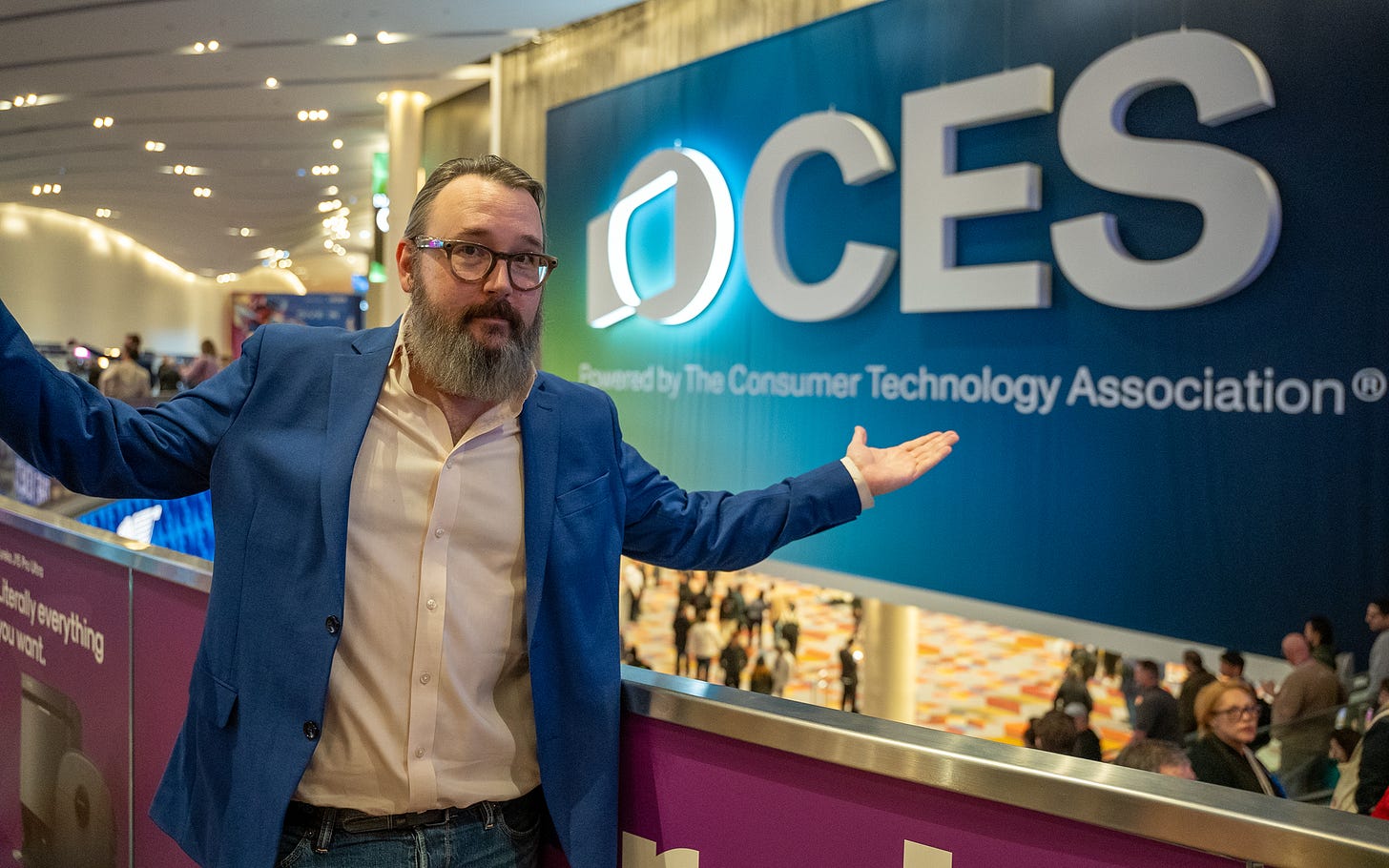CES is now a show about...
AI, gaming, and even robots, it all comes down to new chips.
It used to be that CES was a show about big TVs. Then it was a show about laptops. For short bits here and there across my 21 years attending, it's been a show about 5G, drones, smart home tech, robots, and pretty much any other hot buzzword.
But now, it's a show about chips. Chips that exist to boost a growing number of AI tools and power a wide array of laptops, desktops and workstations, but definitely chips. And for someone who likes the under-the-hood aspect of CES more than the gimmicky laundry folding/cocktail mixing/smellmaxing plastic gadgets that never actually make it to market, I think that's a good thing.
Intel. AMD, NVIDIA, Qualcomm and others all made big moves, although it was NVIDIA that stole the spotlight with a flashy stadium keynote from CEO Jensen Huang that covered everything from inexpensive gaming graphics to massive AI servers to a lineup of humanoid robots (keep repeating to yourself, "definitely not killbots...").
I'll quote my former CNET colleague Ian Sherr (now a regular contributor to Micro Center News), from his coverage of the show:
Intel announced its Core Ultra 200-branded CPUs, targeting devices for everyone from creators and hardcore gamers to thin-and-light laptop users.
AMD meanwhile showed off a series of performance-focused desktop and laptop chips, including the Ryzen 9 CPUs and "Ryzen AI" chips, aimed at Microsoft's Copilot Plus-branded PCs. AMD also showed its Ryzen Z2 mobile handheld PC ships, aimed at devices like the Valve Steam Deck.
NVIDIA said it plans to launch four models of its latest GPU, starting with the $549 RTX 5070, which NVIDIA CEO Jensen Huang said offers processing power comparable to the company's high-performance RTX 4090 GPU, which cost $1,599 when it launched in 2022. The now-leading $1,999 RTX 5090 is expected to provide twice the performance of its predecessor.
The best bit of showmanship was frankly how Jensen Huang rolled out the new RTX 50-series GPUs, starting with the upper-midrange RTX 5070, which he said would mimic the performance of the current high-end (and impossible to find) RTX 4090 GPU, for a very reasonable $549. The top-end 5090 card might cost $2,000, but fans will flock to the lower-cost 5070 and 5070 TI cards when they hit stores in February (the 5080 and 5090 are coming January 30).
How are they so good? It's AI, of course, which can finally reliably generate intermediate frames and pixels that are indistinguishable from ones I'd call "organically rendered" by the game engine. In one demo NVIDIA showed me, the GPU could generate three AI frames for every one organically rendered frame. And not just by integrating the pixels in-between like we used to do, but by having enough training data about specific games, and games in general (and the same idea applies to video and other media) to know what those intermediate frames should look like.
Note this is a *very* rudimentary explanation for what's going on, but the bigger takeaway is that upscaling, which used to be a term with a bit of a dodgy reputation, might need a new name to reflect this new reality.
There was a lot more to see, including Dell doing a clean sweep of all its PC lines names (farewell, XPS!), handheld gaming systems like a SteamOS version of the Lenovo Legion Go S, and a big 11-inch handheld from Acer, and even Panasonic’s return to the TV market with a hot new OLED set.
If you want to catch up on all the computer and gaming news from CES, the latest updates from my MCN team is here:
And some highlights include:


